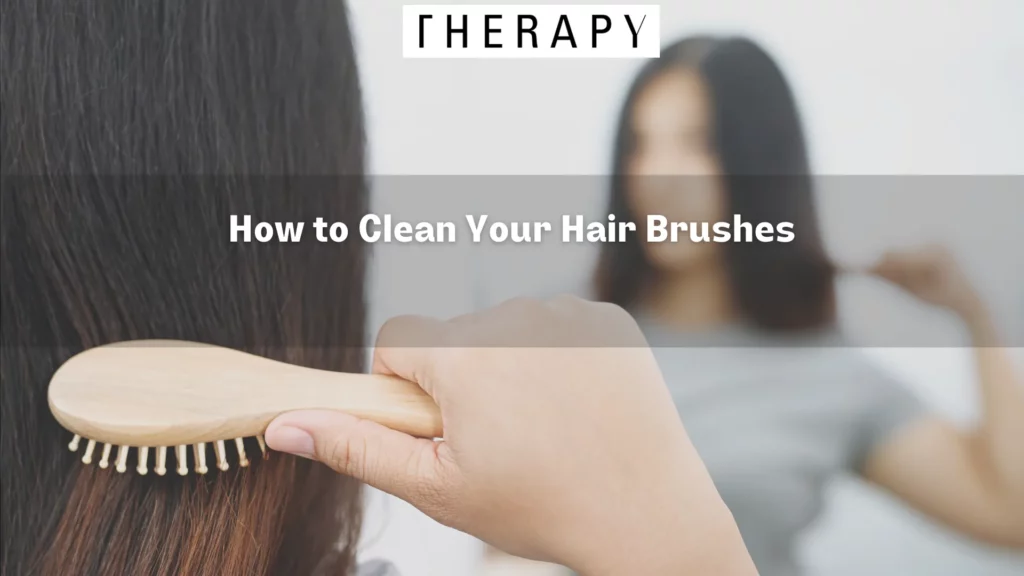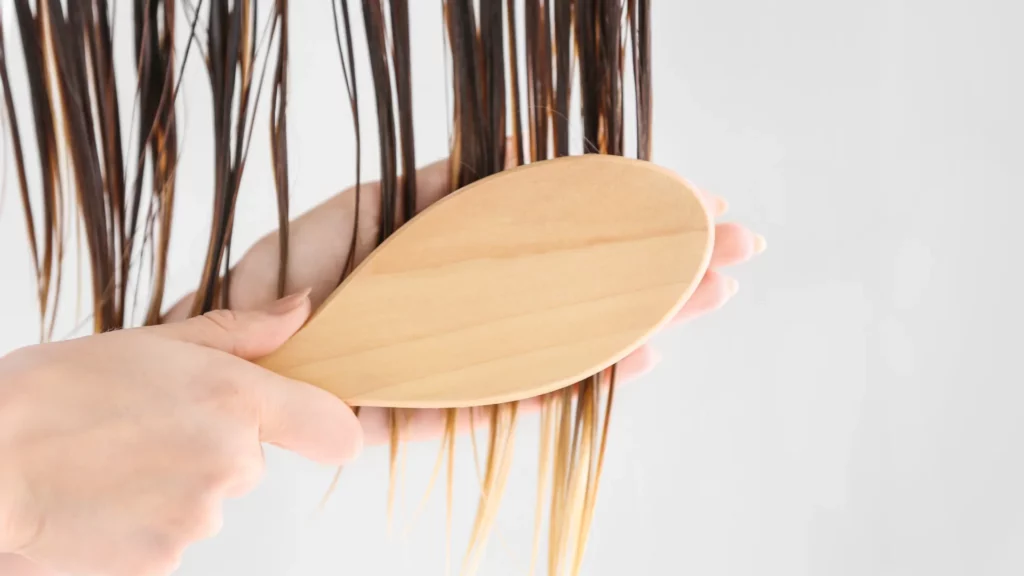How to Clean Your Hair Brushes
Whether you’re fixing your home, car, or hair, keeping your tools clean is crucial. That’s why we wanted to explore an often-neglected aspect of hair care: how to clean hair brushes. Regularly cleaning your brushes can help extend the life of your hair tools and promote healthier hair. On the other hand, brushes laden with old hair, oils, and product build-up can damage your hair’s health.
The team at Therapy Hair Studio wants you to have the tools to keep your hair looking fabulous and healthy. In this guide, our expert stylists will walk you through straightforward methods to clean your brushes, enhancing their performance and ensuring they remain a beneficial part of your hair care routine.
Why Hair Brushes Need Cleaning
Hair brushes trap various unwanted elements. Each stroke through your hair collects loose strands, natural oils, dust, and product residue. Over time, this build-up turns your brush into a breeding ground for bacteria and fungus. These unwanted guests can then transfer back to your scalp, potentially causing irritation, dandruff, or infections.
Moreover, a dirty hair brush affects hair quality. Imagine brushing your freshly washed hair with a brush coated in old oils and product build-up. It’s counterproductive, as it redistributes these impurities back onto your hair and scalp. This can make your hair look greasy and unclean, even if you’ve just washed it.
Additionally, brushes filled with hair and residue can’t perform effectively. A clogged brush cannot pass through your hair smoothly, leading to more tangles and breakage. The bristles become strained and less flexible, reducing the brush’s ability to massage the scalp and distribute oils evenly. This can result in uneven oil distribution, making your hair look and feel less healthy.
Finally, regular cleaning extends the life of your hair brushes. Just like any other tool, brushes last longer when well-maintained. A clean brush maintains its shape and integrity, ensuring you get the best value for your investment.
How to Wash Your Hair Brushes
A clean brush helps ensure effective styling and prevents oils and product residue from spreading to your hair and scalp. Here’s a step-by-step guide to properly washing your hair brushes:
- Remove Hair: Start by removing all the hair trapped in the brush. You can use a wide-toothed comb or your fingers to pull out the hair gently. For stubborn strands, scissors can cut the hair, making it easier to remove.
- Prepare a Cleaning Solution: Mix warm water with a few drops of gentle shampoo or mild soap in a bowl or sink. Avoid soaking brushes with natural bristles or wooden handles in water, as this can cause damage.
- Dip and Swirl: Hold the handle and dip the bristled part of the brush into the cleaning solution. Gently swirl the brush around to loosen the build-up. For synthetic brushes, you can gently scrub the bristles with an old toothbrush.
- Rinse Thoroughly: After swirling, rinse the brush under running lukewarm water. Make sure to remove all soap suds and debris. Again, for brushes with wooden handles or natural bristles, try to avoid getting the handle too wet.
- Dry the Brush: Gently shake off excess water and lay the brush bristle-side down on a clean towel. This position allows water to drain away from the handle. Let the brush air dry completely before using it again.
How Often to Replace Hair Brushes
Generally, you should replace your hair brushes every six to twelve months. However, this can vary depending on the brush type and how often you use it. Regular brushes used daily might need replacing sooner than those used less frequently. Pay attention to the signs of wear and tear. When bristles start to bend, fray, or fall out, it’s time for a new brush. Damaged bristles can snag and pull on your hair, leading to breakage and split ends.
Another factor to consider is the brush’s cleanliness. Even with regular cleaning, brushes can accumulate build-up that’s hard to remove. If you notice persistent residue or an odor that doesn’t go away after cleaning, it’s a good indication that you need a new brush.
For those using specialized brushes for styling or heat-resistant brushes, check for signs of melting, warping, or significant bristle damage. These changes can affect the brush’s performance and may even cause damage to your hair.
Do you have questions about cleaning your hair brushes or need a haircut? Therapy Hair Studio is here for all your hair care needs. Call (713) 355-4247 or complete our contact form to schedule an appointment.
Related Posts:







